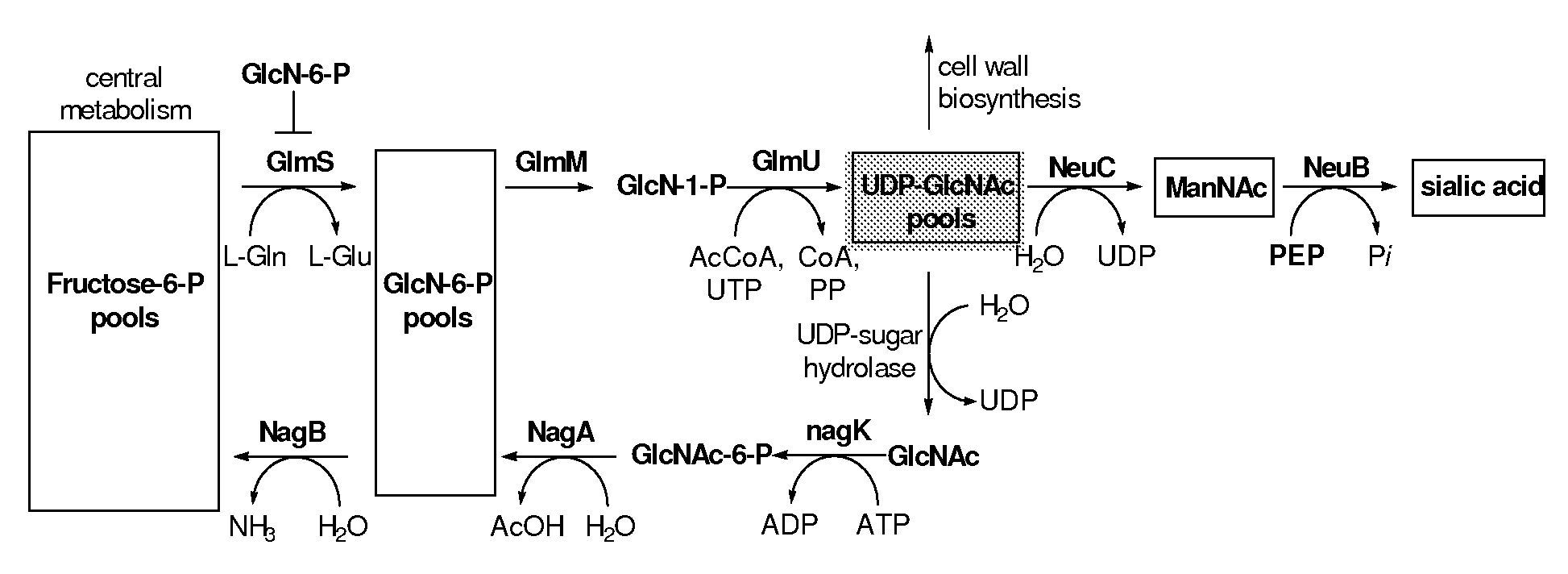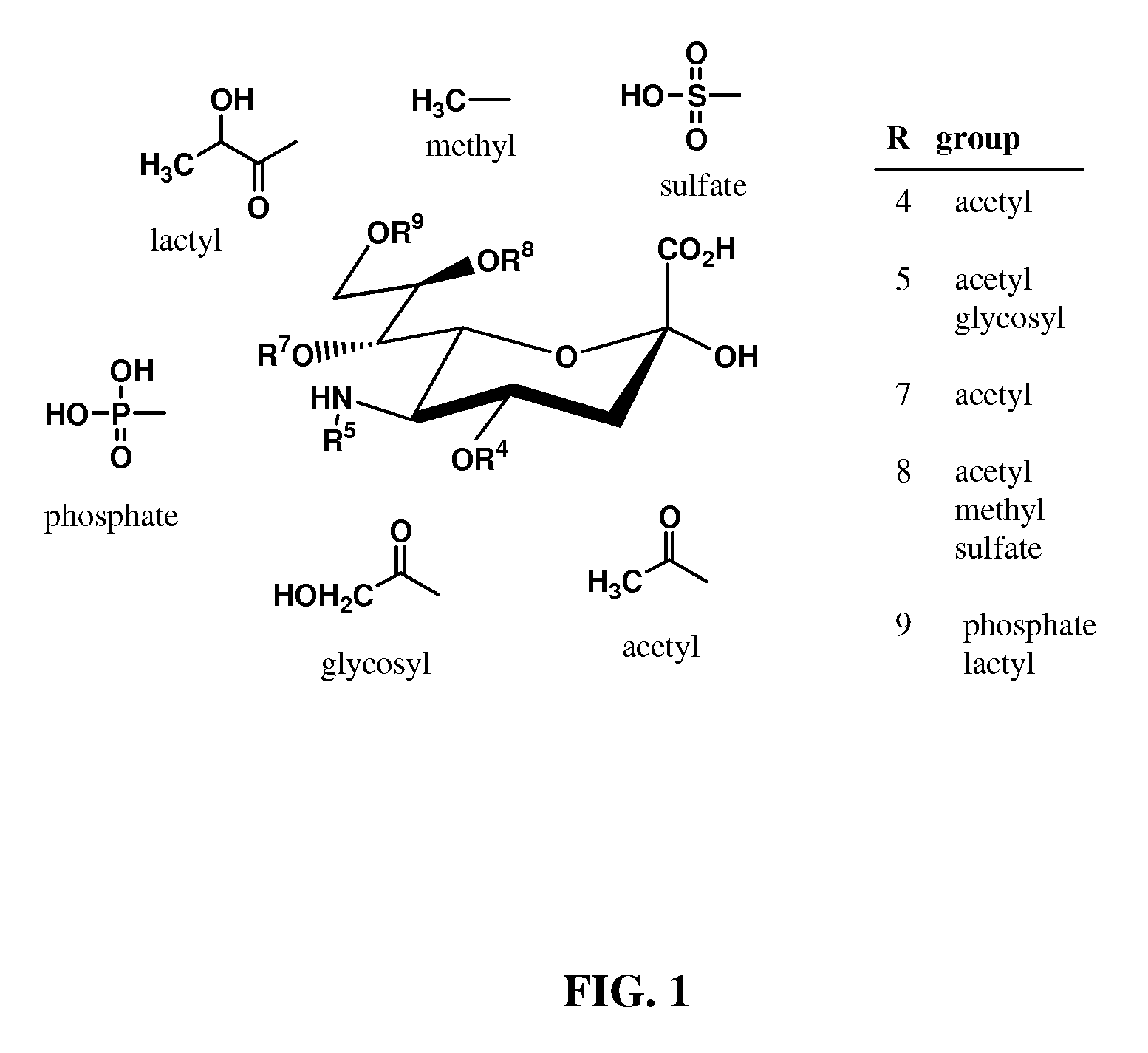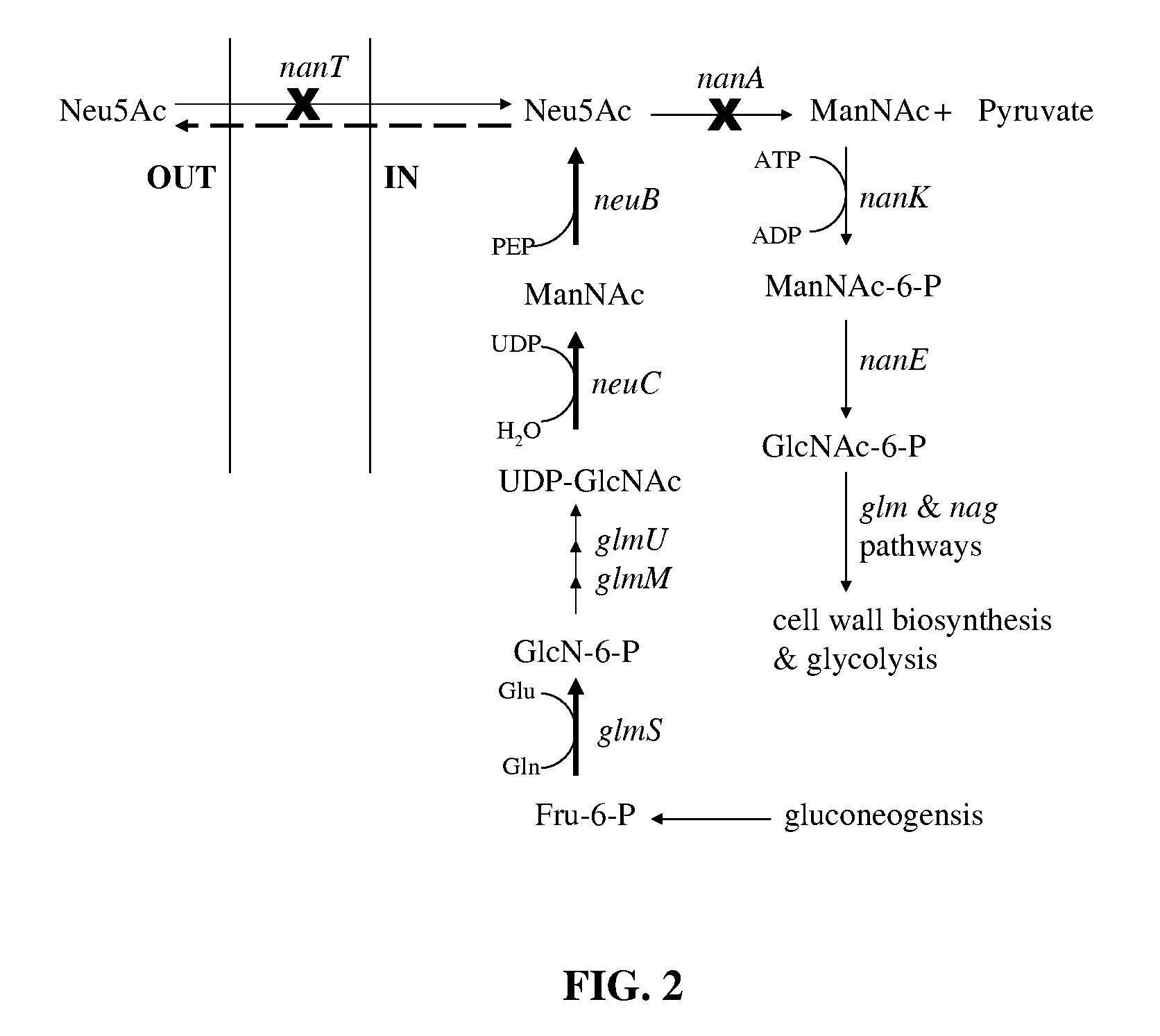Metabolically Engineered Escherichia Coli For Enhanced Production of Sialic Acid
- Summary
- Abstract
- Description
- Claims
- Application Information
AI Technical Summary
Benefits of technology
Problems solved by technology
Method used
Image
Examples
example 1
[0044]This example relates to the deletion of a key E. coli gene, nanT, to generate a nanT− E. coli mutant because nanT is a sialic acid transporter and is responsible for sialic acid uptake.
[0045]A nanT knockout E. coli K-12 strain MG1655 named FB21071 was requested from the Blattner laboratory at the University of Wisconsin, Madison, Wis. This strain has a Tn5 insertion into the nanT gene that confers kanamycin resistance. To allow for gene expression from T7lac-promoter plasmids, a T7 RNA polymerase gene under a lac-promoter was inserted into the chromosome of FB21071 using the kDE3 lysogenization kit (Novagen, San Diego, Calif.) to generate the strain BRL01.
example 2
[0046]This example relates to the engineered neuBC pathway, as discussed supra, whose expression was controlled by a T7lac promoter. This experiment describes the introduction of the engineered neuBC pathway into the nanT− E. coli strain BRLO1 that possesses a lac-controlled T7 RNA polymerase gene.
[0047]The neuC and neuB genes of Neisseria meningitidis group B, which were introduced into the nanT− E. coli strain BRL01, as discussed herein, are sialic acid biosynthetic genes. NeuC is a hydrolyzing epimerase that converts UPD-N-acetylglucosamine (UDP-GlcNAc), a common metabolite in bacteria, to ManNAc. The siaA gene involved in capsule polysaccharide biosynthesis of Neisseria meningitidis B codes for N-acylglucosamine-6-phosphate 2-epimerase activity. ManNAc is subsequently condensed with phospenolpyruvate to generate sialic acid through NeuB catalysis, as seen in FIG. 2.
[0048]Genomic DNA from Neisseria meningitidis ATCC® BAA-335D was used for Polymerase Chain Reaction (PCR). Pfu Turb...
example 3
[0055]This example describes the deletion of the nanA gene of BRL01 using a gene replacement strategy to generate the strain BRL02, and the subsequent introduction of plasmid pBRL22 of Example 2 into BRL02 to form BRL02 / pBRL22.
[0056]The generation of a nanT− nanA− E. coli mutant is important because the nanT gene is involved in sialic acid uptake and the nanA gene is involved in sialic acid degradation. NanT is a sialic acid transporter and is responsible for sialic acid uptake, as noted supra, and NanA is an adolase that cleaves sialic acid into pyruvate and N-acetylmannosamine (ManNAc). The removal of the nanA and nanT genes abolishes sialic acid catabolism, as seen in FIG. 2.
[0057]To completely eliminate sialic acid degradation and increase the sialic acid titer, the lambda Red system was used to knockout the nanA gene of BRL01 to generate the nanT−nanA− E. coli mutant, BRL02.
[0058]Briefly, a cassette encoding tetracycline resistance was amplified from the vector pBR322 (New Engl...
PUM
| Property | Measurement | Unit |
|---|---|---|
| Level | aaaaa | aaaaa |
| Strain point | aaaaa | aaaaa |
Abstract
Description
Claims
Application Information
 Login to View More
Login to View More - R&D
- Intellectual Property
- Life Sciences
- Materials
- Tech Scout
- Unparalleled Data Quality
- Higher Quality Content
- 60% Fewer Hallucinations
Browse by: Latest US Patents, China's latest patents, Technical Efficacy Thesaurus, Application Domain, Technology Topic, Popular Technical Reports.
© 2025 PatSnap. All rights reserved.Legal|Privacy policy|Modern Slavery Act Transparency Statement|Sitemap|About US| Contact US: help@patsnap.com



